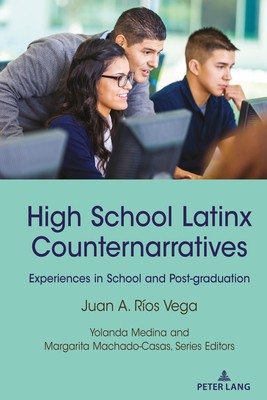
- We will send in 10–14 business days.
- Publisher: Peter Lang Inc., International Academic Publishers
- ISBN-10: 1433181290
- ISBN-13: 9781433181290
- Format: 15.2 x 22.9 x 1 cm, hardcover
- Language: English
- SAVE -10% with code: EXTRA
High School Latinx Counternarratives (e-book) (used book) | bookbook.eu
Reviews
Description
This book represents an ethnographic study of the experiences and counternarratives of twelve Latinx young adults. All of the participants in this study are first generation immigrants to the United States, representing different cultural and socioeconomic backgrounds and immigration statuses. Drawing from Latino Critical Theory (LatCrit) and Queers of Color Epistemologies as a theoretical framework, this book analyzes the personal experiences of Latinx during and after finishing high school. This book uses a classroom project (dialogue journals) to reconnect with twelve former English language learners (ELLs) from the Southeast after ten years. Through the use of dialogue journals as an English as a second language (ESL) strategy to support writing, the participants in this book document personal and communal experiences as Latinx immigrants in the United States. This book will represent an excellent asset for teachers, school administrators, counselors, staff, preservice teachers, practicing educators, graduate students, scholars, and policymakers.
EXTRA 10 % discount with code: EXTRA
The promotion ends in 18d.04:19:29
The discount code is valid when purchasing from 10 €. Discounts do not stack.
- Publisher: Peter Lang Inc., International Academic Publishers
- ISBN-10: 1433181290
- ISBN-13: 9781433181290
- Format: 15.2 x 22.9 x 1 cm, hardcover
- Language: English English
This book represents an ethnographic study of the experiences and counternarratives of twelve Latinx young adults. All of the participants in this study are first generation immigrants to the United States, representing different cultural and socioeconomic backgrounds and immigration statuses. Drawing from Latino Critical Theory (LatCrit) and Queers of Color Epistemologies as a theoretical framework, this book analyzes the personal experiences of Latinx during and after finishing high school. This book uses a classroom project (dialogue journals) to reconnect with twelve former English language learners (ELLs) from the Southeast after ten years. Through the use of dialogue journals as an English as a second language (ESL) strategy to support writing, the participants in this book document personal and communal experiences as Latinx immigrants in the United States. This book will represent an excellent asset for teachers, school administrators, counselors, staff, preservice teachers, practicing educators, graduate students, scholars, and policymakers.


Reviews